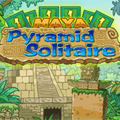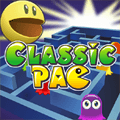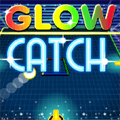*Sum to Ten: Number Link* invites gamers into a sleek, mind-teasing puzzle adventure in which quick wondering and numerical precision combine to create an addictive assignment. This innovative recreation obligations you with connecting numbered tiles on a grid to form chains that upload as much as exactly 10, blending easy mathematics with strategic planning. With its easy visuals, intuitive mechanics, and escalating complexity, *Sum to Ten: Number Link* transforms a straightforward concept into a captivating mental exercise that appeals to casual gamers and puzzle enthusiasts alike. Whether you’re linking numbers in a quick session or tackling a complex grid, this sport offers a satisfying blend of logic, method, and accomplishment that continues you hooked. The center objective of *Sum to Ten: Number Link* is elegantly simple: join numbered tiles on a grid so their values total precisely 10, removing them from the board to clear the extent. Each grid is packed with tiles bearing numbers (e.G., zero, 1, 2, up to nine), and gamers draw lines to link adjacent tiles—horizontally, vertically, or occasionally diagonally, relying on the extent’s policies—to form a sequence that sums to ten. For example, you might join an eight and a 2, or create a longer chain like 6+2+1+1+zero. Once a valid chain is shaped, the tiles disappear, and new tiles may also shift or appear, reshaping the grid. The goal is to clear all tiles or meet a specific target, such as doing away with a fixed wide variety of tiles, to finish the level. The gameplay hinges on strategic range selection and pathfinding. While finding combos that upload to ten is easy, the assignment lies in selecting the proper tiles and connections to keep away from lifeless ends. Tiles are often surrounded via others, so linking a 7 and a 3 might block get right of entry to to different essential numbers. Players ought to plan their chains cautiously, thinking about how each circulate alters the grid and whether or not quick chains (e.G., nine+1) or longer ones (e.G., four+three+2+1) will open up greater possibilities. Later degrees introduce constraints like restrained movements, blocked tiles, or special tiles (e.G., wildcards or negatives), adding depth and requiring gamers to suppose several steps beforehand, making every cleared grid a triumph of common sense and foresight. To decorate accessibility, *Sum to Ten: Number Link* consists of functions that balance ease with venture. A hint gadget highlights ability chains when gamers are caught, offering a nudge without solving the puzzle outright. An undo feature shall we gamers backtrack from a misstep, encouraging experimentation, whilst a “check” option in harder stages flags invalid moves before they’re locked in. For mainly tricky grids, a restricted reset alternative allows a fresh start without losing development. These mechanics make certain the game is approachable for novices whilst offering sufficient complexity to have interaction pro puzzlers, creating a unbroken combination of fun and assignment. Visually, the game is a model of minimalist elegance. The grid is smooth and vibrant, with numbered tiles in formidable, wonderful colorations for smooth popularity. Connections between tiles are drawn as easy, sparkling traces, and cleared chains vanish with a satisfying animation. Customizable backgrounds—from serene pastels to futuristic neon grids—allow players personalize the cultured, whilst crisp visuals make sure readability on any tool, from smartphones to desktops. A calming yet upbeat soundtrack, paired with gentle sound consequences just like the click of a connected tile or the chime of a cleared chain, creates an immersive atmosphere that complements the sport’s centered, meditative pace. Accessibility is woven into the game’s design, making sure it welcomes players of all ability degrees. The controls are intuitive, with drag-to-connect or faucet-to-link inputs that sense precise on each mobile and computing device structures. The interface is uncluttered, with the grid, last moves, and goal rating surely displayed, keeping the focal point on the puzzle. A tutorial mode introduces newcomers to the mechanics, even as adjustable difficulty settings—along with smaller grids or easier variety tiers—cater to beginners. Expert modes with large grids, stricter pass limits, or complicated chain requirements task seasoned players, making sure huge appeal. The development system adds replayability and a sense of success. Each cleared grid earns points based totally on speed, moves used, and chain performance, with bonuses for minimum actions or ideal clears. The recreation gives a number of grid sizes and layouts, from compact 4x4 puzzles to sprawling 8x8 demanding situations, ensuring each stage feels fresh. Daily challenges introduce unique objectives, like clearing a grid with handiest quick chains or inside a time restriction, even as leaderboards permit players evaluate scores with pals or global competitors, including a competitive edge. A relaxed mode gets rid of timers and pass limits for individuals who decide upon a leisurely pace, permitting them to savor the joy of variety-crunching. What makes *Sum to Ten: Number Link* truly super is its ability to turn a easy arithmetic concept right into a wealthy, strategic puzzle. The mission of connecting numbers to sum to ten, combined with the want for smart pathfinding, creates a gameplay revel in that is both intuitive and deeply engaging. The game’s clean visuals, intuitive controls, and profitable development gadget increase every session, making every cleared grid a triumph of logic and precision. Whether you’re linking a short 8+2 or crafting a complicated four+three+2+1 chain, *Sum to Ten: Number Link* invites you to immerse yourself in a international of numerical harmony and strategic brilliance, conquering each grid one perfectly summed chain at a time. *Sum to Ten: Number Link* invites gamers into a swish, mind-teasing puzzle journey wherein quick questioning and numerical precision integrate to create an addictive challenge. This innovative sport obligations you with connecting numbered tiles on a grid to form chains that upload up to exactly 10, mixing simple mathematics with strategic making plans. With its easy visuals, intuitive mechanics, and escalating complexity, *Sum to Ten: Number Link* transforms a sincere concept right into a charming mental workout that appeals to informal gamers and puzzle lovers alike. Whether you’re linking numbers in a quick session or tackling a complex grid, this game gives a fulfilling blend of common sense, strategy, and accomplishment that continues you hooked. The middle objective of *Sum to Ten: Number Link* is elegantly simple: connect numbered tiles on a grid so their values total precisely 10, removing them from the board to clean the extent. Each grid is full of tiles bearing numbers (e.G., 0, 1, 2, as much as nine), and gamers draw strains to link adjoining tiles—horizontally, vertically, or on occasion diagonally, depending on the level’s regulations—to form a series that sums to ten. For example, you may join an 8 and a 2, or create an extended chain like 6+2+1+1+0. Once a valid chain is shaped, the tiles disappear, and new tiles might also shift or seem, reshaping the grid. The goal is to clear all tiles or meet a selected goal, which includes putting off a set range of tiles, to finish the level. The gameplay hinges on strategic number selection and pathfinding. While locating combos that add to 10 is easy, the task lies in selecting the proper tiles and connections to keep away from lifeless ends. Tiles are often surrounded through others, so linking a 7 and a three might block access to different important numbers. Players ought to plan their chains carefully, considering how every move alters the grid and whether or not quick chains (e.G., nine+1) or longer ones (e.G., four+three+2+1) will open up greater possibilities. Later degrees introduce constraints like confined movements, blocked tiles, or special tiles (e.G., wildcards or negatives), adding intensity and requiring players to suppose several steps ahead, making every cleared grid a triumph of logic and foresight. To decorate accessibility, *Sum to Ten: Number Link* consists of features that stability ease with assignment. A hint machine highlights capacity chains whilst players are stuck, supplying a nudge with out fixing the puzzle outright. An undo function lets players go into reverse from a misstep, encouraging experimentation, while a “test” choice in harder levels flags invalid actions earlier than they’re locked in. For especially complex grids, a restricted reset alternative permits a sparkling start without dropping progress. These mechanics make sure the sport is approachable for beginners at the same time as providing enough complexity to have interaction pro puzzlers, growing a continuing combo of amusing and venture. Visually, the sport is a version of minimalist beauty. The grid is smooth and colourful, with numbered tiles in ambitious, awesome colorings for clean reputation. Connections among tiles are drawn as clean, sparkling traces, and cleared chains vanish with a satisfying animation. Customizable backgrounds—from serene pastels to futuristic neon grids—permit gamers personalize the cultured, while crisp visuals make certain readability on any tool, from smartphones to computer systems. A calming but upbeat soundtrack, paired with mild sound effects like the click on of a connected tile or the chime of a cleared chain, creates an immersive surroundings that complements the game’s targeted, meditative tempo. Accessibility is woven into the game’s design, ensuring it welcomes players of all skill tiers. The controls are intuitive, with drag-to-connect or tap-to-link inputs that feel precise on both cellular and laptop structures. The interface is uncluttered, with the grid, last movements, and target score without a doubt displayed, retaining the focus at the puzzle. A educational mode introduces novices to the mechanics, even as adjustable problem settings—such as smaller grids or easier variety levels—cater to beginners. Expert modes with larger grids, stricter move limits, or complex chain requirements project seasoned players, making sure wide attraction. The progression system provides replayability and a feel of success. Each cleared grid earns factors based totally on pace, movements used, and chain efficiency, with bonuses for minimal actions or best clears. The sport gives a whole lot of grid sizes and layouts, from compact 4x4 puzzles to sprawling 8x8 challenges, ensuring every stage feels sparkling. Daily challenges introduce specific targets, like clearing a grid with simplest short chains or within a time limit, even as leaderboards allow gamers compare scores with pals or worldwide competitors, including a aggressive aspect. A relaxed mode eliminates timers and circulate limits for people who prefer a leisurely pace, letting them appreciate the joy of quantity-crunching. What makes *Sum to Ten: Number Link* actually excellent is its capacity to turn a easy mathematics concept into a rich, strategic puzzle. The assignment of connecting numbers to sum to ten, mixed with the need for smart pathfinding, creates a gameplay revel in that is both intuitive and deeply attractive. The recreation’s smooth visuals, intuitive controls, and worthwhile progression system elevate every session, making each cleared grid a triumph of good judgment and precision. Whether you’re linking a brief eight+2 or crafting a complex 4+three+2+1 chain, *Sum to Ten: Number Link* invites you to immerse yourself in a global of numerical concord and strategic brilliance, conquering every grid one perfectly summed chain at a time.
Embed this game























